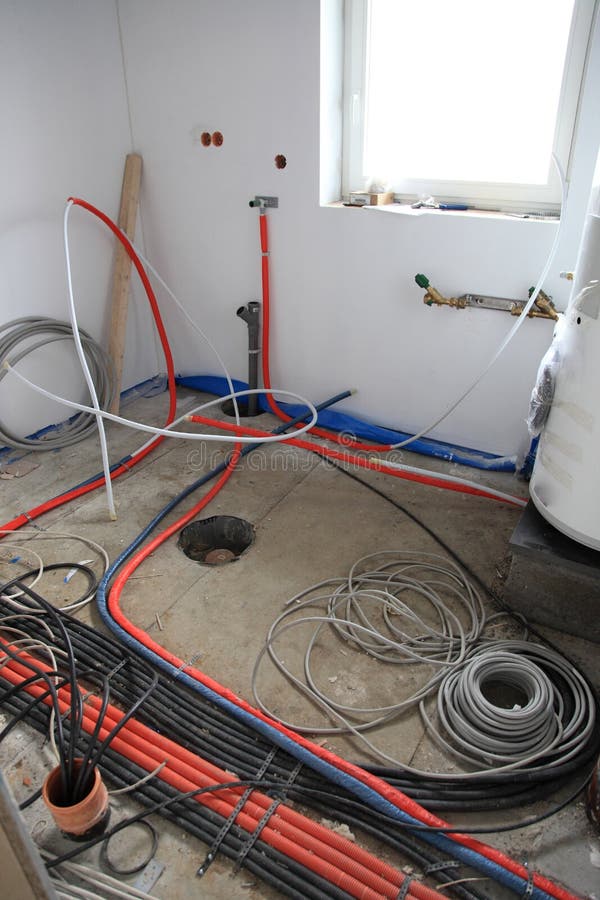Demystifying Electrical Installation: Understanding Codes and Laws for a Lawful and Safe Setup
In the world of electric setup, adherence to codes and laws is extremely important to ensure both validity and safety. The complexities surrounding electric job can be challenging, however acquainting oneself with the well-known requirements is key to browsing this area with self-confidence. By comprehending the ins and outs of the National Electric Code and local building regulations, individuals can ensure that their installations satisfy needed precaution and remain in compliance with the legislation. However, the trip to demystifying electrical setup exceeds plain knowledge with regulations; it necessitates a profound grasp of how to carry out safe electric practices effectively.
Significance of Electric Codes
The adherence to electric codes is essential in making sure the safety and security and dependability of electrical installations. Electric codes function as a set of standards and guidelines that dictate the appropriate layout, installation, and maintenance of electrical systems. These codes are developed to decrease the threat of electric dangers, fires, and various other safety issues that might occur from damaged electric work.

Furthermore, electrical codes are routinely updated to include new modern technologies, finest techniques, and precaution. Remaining updated with these codes is vital for professionals in the electrical sector to guarantee that their job meets the most recent security requirements. Inevitably, the value of electrical codes hinges on developing a safe and secure and reliable electric facilities that benefits both people and areas.
Trick Regulations for Safety
Several fundamental laws control the security standards in electrical installations. One vital law is the National Electric Code (NEC), which provides standards for safe electrical layout, setup, and inspection to shield individuals and residential or commercial property from electric hazards. The NEC covers facets such as wiring methods, grounding, overcurrent security, and tools setup to make sure a secure electric system.
An additional crucial regulation is the Occupational Safety and Health Administration (OSHA) requirements, which focus on the security of workers associated with electric setups (BRE Electrical Solutions). OSHA regulations include requirements for proper training, safety procedures, and personal protective devices to stop work environment mishaps and injuries
Moreover, the International Electrotechnical Compensation (IEC) standards intend to integrate electrical installation regulations on an international range. These standards address concerns like electric equipment safety, electro-magnetic compatibility, and energy efficiency to advertise uniformity and safety in electric installations worldwide.
Conformity with these crucial policies is necessary to make certain the security and legality of electric installations, shielding both individuals and residential or commercial property from the risks connected with electrical power.
Understanding National Electric Code
Secret regulations such as the National Electric Code (NEC) provide necessary guidelines for risk-free electrical style, installation, and assessment to ensure the security of individuals and residential property from electrical dangers. The NEC, also called NFPA 70, is a comprehensive set of requirements for electric installations that are upgraded every 3 years. It is developed by the National Fire Security Organization (NFPA) and is widely embraced throughout the United States.
The NEC covers different facets of electric work, including circuitry methods, grounding, overcurrent click site protection, and devices installment. It aims to protect individuals and building by dealing with prospective threats linked with electrical systems. Compliance with the NEC is normally applied by local authorities having jurisdiction (AHJs), such as developing code authorities and assessors.
Recognizing the NEC is essential for electrical specialists, developers, and assessors to make certain that installations meet the required security demands. By adhering to the NEC guidelines, experts can assist stop electric mishaps and make sure the dependability of electric systems in property, industrial, and commercial settings.

Conformity With Regional Building Regulations
Comprehending and adhering to neighborhood building codes is vital for making certain the safety and compliance of electrical setups within a specific jurisdiction. These codes describe certain needs for my site electric installations, such as the type of electrical wiring to be utilized, positioning of electrical outlets, basing methods, and load capacities.
When it pertains to electric installments, failing to abide by local building ordinance can result in major repercussions. Non-compliant setups may present security dangers, boost the threat of electric fires, and bring about pricey penalties or lawful problems. Furthermore, insurer might decline to cover damages resulting from installations that do not meet local building ordinance needs. Therefore, it is important for electrical contractors and professionals to stay informed around and purely follow the regional building codes appropriate to their projects.
Ensuring Safe Electric Practices
Practicing strict adherence to developed safety methods is vital in the field of electric setups to mitigate possible risks and make certain the wellness of people and residential properties. Safety in electric work includes various elements, starting with the appropriate training of employees associated with installment, maintenance, and repair service. It is necessary to adhere to manufacturer directions diligently when managing electric components and devices. Before beginning any kind of work, it is necessary to carry out a comprehensive danger evaluation to recognize possible hazards and execute preventative measures. Utilizing personal safety tools (PPE) such as insulated gloves, security glasses, and non-conductive shoes is non-negotiable to visit their website guard against electric shocks and arc flashes. Routine devices examinations, screening, and upkeep schedules are essential to find and fix mistakes prior to they escalate into safety risks. Moreover, adherence to appropriate lockout-tagout treatments throughout maintenance activities is important to avoid unintended energization of circuits. By focusing on secure methods, electrical setups can work effectively while reducing the possibility of accidents or damages.
Verdict
To conclude, adherence to electric codes and guidelines is essential for making certain the security and legality of electric installations. Recognizing the National Electric Code and compliance with neighborhood building codes are crucial for a risk-free arrangement. By complying with these standards and practicing secure electrical methods, people can avoid possible risks and make certain the appropriate performance of their electrical systems.